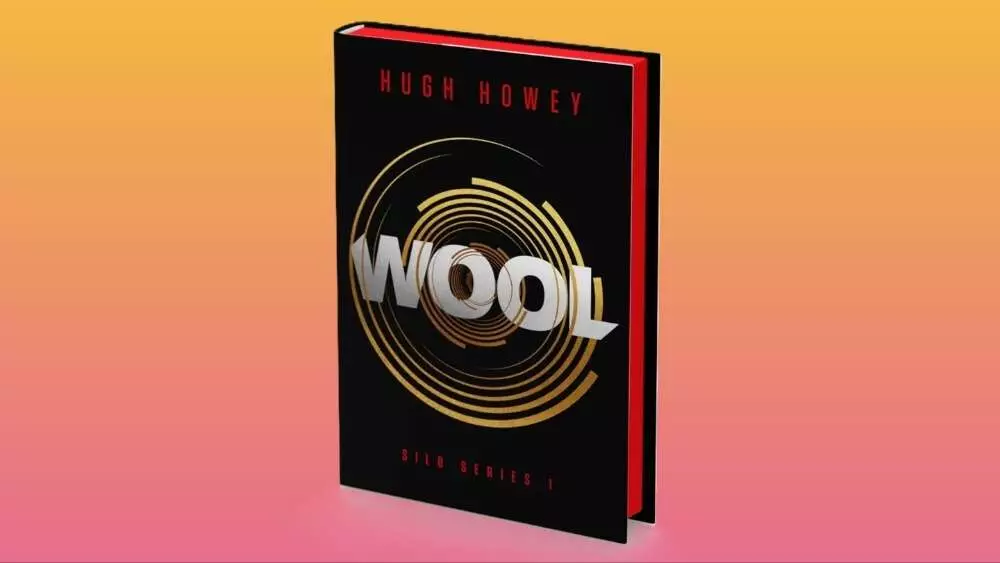The sci-fi genre has long fascinated audiences with its compelling narratives and intricate world-building. Apple’s adaptation of Hugh Howey’s trilogy, prominently featuring “Wool,” has added a new layer to this fascination. As Season 2 of “Silo” rolls out on November 15, it’s not just the premiere that’s generating excitement; the revived literary presence of Howey’s work is evident with the release of a special hardcover edition. This article examines the multidimensional aspects of the Silo narrative, the promotional opportunities for readers, and the significant impact of serialized storytelling on modern literature.
Multi-format releases are crucial for connecting with diverse audiences. The recent release of the “Wool Collector’s Edition,” featuring a sleek hardcover design that retails for $30 at a discounted rate, exemplifies the marriage of aesthetic appeal and literary substance. With its red sprayed edges, illustrated endpapers, and a unique essay by the author himself, this edition stands as a testament to the importance of packaging in literature today. Readers not only seek gripping stories but also appreciate the tangible beauty of a well-crafted book.
Moreover, the publishing landscape has transformed dramatically with promotional campaigns like Amazon’s Buy Two, Get One Free Sale. Although this campaign excludes the new hardcover edition of “Wool,” it includes other formats of Howey’s works, emphasizing the growing trend of bundling books to encourage comprehensive reading experiences. For fans of the series, the Silo Saga Box Set offers value, featuring all three novels in a single collection. Such strategies lure potential readers who may not yet be familiar with the series, allowing them to explore the complete saga at a reasonable price.
With the launch of Season 2 on Apple TV+, new and returning viewers find themselves immersed in the stark yet compelling universe of “Silo.” The show’s premise revolves around humanity’s struggle to survive in a futuristic underground silo where the outside world has become inhospitable. At the center of this tension is Juliette, who finds herself grappling with not only external threats but also the internal turmoil of a conspiracy that threatens the very foundation of her existence.
This dramatic narrative resonates with vast audiences, particularly in an era where apocalyptic themes capture the collective imagination. As viewers are drawn into Juliette’s journey, they may be inclined to delve into the source material, seeking to understand the origins of the world they are witnessing. This interconnection between visual storytelling and literature amplifies the narrative’s reach, proving that well-crafted adaptations can generate renewed interest in their source material.
Serialized storytelling has resurged as a prominent vehicle for engaging readers, harking back to a method popularized by literary giants like Charles Dickens in the 19th century. Hugh Howey’s journey with “Wool” mirrors this tradition, as he initially released the novel in segments through Amazon’s Kindle Direct Publishing program. In a world where readers are accustomed to binge-watching series, serialized literature creates anticipation and community as readers discuss each installment, akin to episode releases in television.
Andy Weir’s success with “The Martian” demonstrates that this interplay between publishing formats and reader engagement is effective in fostering dedicated fanbases. Howey’s decision to serialize “Wool” not only established his brand but also provided an interactive experience for readers, as they eagerly awaited new revelations in the ongoing saga.
As we gear up for the latest season of “Silo,” it’s apparent that Hugh Howey’s creation is here to stay. The combination of high-quality adaptations, collectible editions, and engaging promotional strategies ensures that the Silo narrative will continue to thrive across multiple mediums. As audiences sink into the depths of the underground world through both the screen and the page, they engage with a story that touches on universal themes of survival, governance, and the consequence of secrets.
The Silo saga highlights an exciting convergence of literature and television, creating pathways for audience engagement that deepen the appreciation for the narrative’s intricacies. As loyal fans return while new readers fall in love with the characters and their predicaments, Howey’s work stands as a modern testament to the resilience and relevance of the dystopian genre in today’s world.

